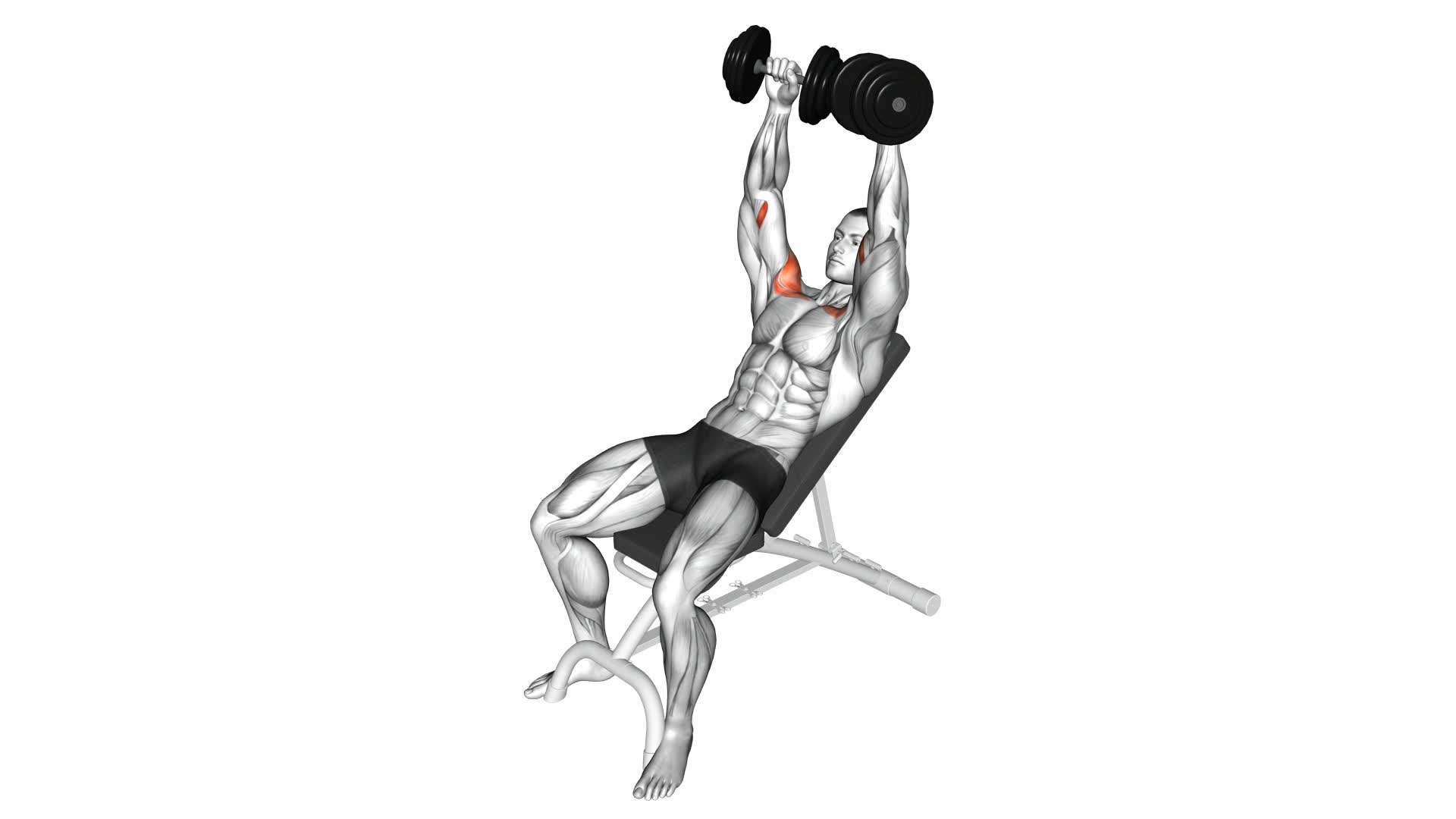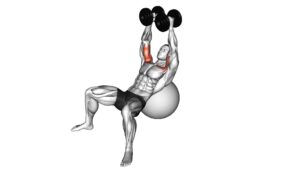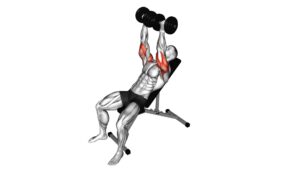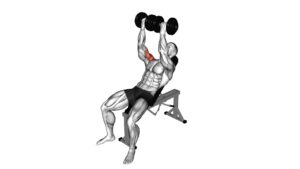Dumbbell Incline Breeding – Video Exercise Guide & Tips

Are you looking to add some variety to your workout routine? Dumbbell incline breeding is a great exercise to target your upper body and build strength.
Watch This Exercise Video
In this article, we'll provide you with a step-by-step guide and tips to ensure you're using proper form. Avoid common mistakes and learn how to progressively increase the intensity of your workouts.
Get ready to take your fitness to the next level with dumbbell incline breeding.
Key Takeaways
- Dumbbell incline breeding targets the upper chest, shoulders, and triceps.
- Engaging stabilizer muscles improves muscle activation during the exercise.
- The exercise leads to significant strength gains.
- Proper equipment and set-up, along with correct form, are crucial for achieving desired results in muscle development.
Benefits of Dumbbell Incline Breeding
Discover the numerous benefits you can achieve through incorporating dumbbell incline breeding into your fitness routine. This exercise not only helps with muscle activation but also leads to significant strength gains.
When performing dumbbell incline breeding, your muscles are activated in a unique way. The incline angle targets your upper chest, shoulders, and triceps, making it an effective exercise for developing these muscles. By using dumbbells instead of a barbell, you engage your stabilizer muscles more, leading to improved overall muscle activation.
In addition to muscle activation, dumbbell incline breeding also helps you achieve strength gains. As you increase the weight of the dumbbells over time, your muscles adapt and grow stronger. The incline angle adds an extra challenge, forcing your muscles to work harder to lift the weight. This progressive overload stimulates muscle growth and improves your overall strength.
Incorporating dumbbell incline breeding into your fitness routine can have a significant impact on your upper body strength and muscle development. By targeting specific muscle groups and providing a challenging workout, this exercise helps you achieve the results you desire.
Proper Equipment and Set-up
To properly perform dumbbell incline breeding, you'll need the appropriate equipment and set-up.
The first thing you'll need is a sturdy incline bench. Make sure it's adjustable so you can set it at an angle of around 30 to 45 degrees. This will allow you to target your upper chest muscles effectively.
Next, you'll need a pair of dumbbells. Choose a weight that challenges you but still allows you to maintain proper form throughout the exercise. It's important to have a firm grip on the dumbbells to prevent them from slipping out of your hands.
Additionally, using a mat or towel on the bench can provide extra cushioning and prevent discomfort during the exercise.
Before starting the dumbbell incline breeding, ensure that the bench is properly positioned and stable. Adjust the angle and secure the dumbbells in your hands. Remember to maintain good posture throughout the exercise and engage your core for stability.
With the proper equipment and correct set-up, you'll be ready to perform the dumbbell incline breeding effectively.
Step-by-step Guide for Correct Form
Now let's dive into the step-by-step guide for performing dumbbell incline breeding with the correct form. Proper breathing techniques are crucial during this exercise to ensure maximum effectiveness and prevent injury. As you lower the dumbbells, exhale slowly and fully, and inhale as you lift them back up. This controlled breathing pattern helps stabilize your core and maintain proper form throughout the movement.
Choosing the right dumbbell weight is essential for a successful dumbbell incline breeding. Start with a weight that challenges you but allows you to maintain proper form. It should feel challenging but not so heavy that you sacrifice your form or risk injury. Gradually increase the weight as you become stronger and more comfortable with the exercise. Remember, it's better to start with lighter weights and gradually progress than to start too heavy and risk injury.
To maintain proper form during the exercise, lie back on an incline bench with your feet flat on the floor. Hold the dumbbells with an overhand grip and position them just above your shoulders. As you lift the dumbbells, focus on squeezing your chest muscles and keeping your elbows slightly bent. Avoid locking your elbows or using momentum to lift the weights. Lower the dumbbells slowly and with control, feeling a stretch in your chest muscles.
Common Mistakes to Avoid
To avoid common mistakes, ensure that you maintain proper form and avoid these errors during dumbbell incline breeding:
- Using too much weight: One of the most common mistakes is using weights that are too heavy. This can lead to poor form and increase the risk of injury. Start with lighter weights and gradually increase as you become more comfortable and confident in your technique.
- Arching your back: It's important to keep your back flat against the bench throughout the exercise. Arching your back puts unnecessary stress on your spine and reduces the effectiveness of the workout. Focus on engaging your core and maintaining a neutral spine position.
- Flaring your elbows: When performing dumbbell incline breeding, it's important to keep your elbows slightly tucked in towards your body. Flaring your elbows out to the sides puts strain on your shoulders and can lead to discomfort or injury. Keep your elbows at a 45-degree angle throughout the movement.
- Lifting your hips off the bench: Your hips should remain in contact with the bench throughout the exercise. Lifting your hips can lead to an imbalance in the movement and reduce the effectiveness of the workout. Keep your feet firmly planted on the ground and focus on using your chest muscles to lift the weights.
- Rushing through the exercise: Take your time and focus on performing each repetition with proper form. Rushing through the exercise not only increases the risk of injury but also reduces the effectiveness of the workout. Control the movement and engage your muscles throughout the entire range of motion.
Tips for Progressive Overload and Variation
To continue improving your dumbbell incline breeding technique, it's important to focus on progressive overload and incorporating variations into your workouts.
Progressive overload techniques involve gradually increasing the intensity of your workouts over time. This can be achieved by increasing the weight of the dumbbells or the number of repetitions and sets you perform. By challenging your muscles with heavier weights or more volume, you stimulate growth and strength gains.
In addition to progressive overload, incorporating different variations of dumbbell incline breeding can help prevent plateaus and keep your workouts interesting. You can try using different grip widths, such as a wide grip or a close grip, to target different muscles in your chest and shoulders. You can also vary the angle of the incline bench, adjusting it to a higher or lower setting, to target different areas of your chest.
Another variation to consider is performing the exercise unilaterally, using one dumbbell at a time. This helps to improve balance and stability, as well as targeting each side of your chest individually.
Remember to always maintain proper form and technique throughout your workouts. Gradually increase the intensity and incorporate variations to continually challenge your muscles and make progress in your dumbbell incline breeding journey.
Frequently Asked Questions
How Many Repetitions and Sets Should I Do for Dumbbell Incline Breeding?
To determine the number of repetitions and sets for dumbbell incline breeding, consider your fitness goals and current strength level.
Generally, it's recommended to perform 8-12 repetitions for 3-4 sets with a challenging weight. This will help build muscle and increase strength.
Dumbbell incline breeding targets the upper chest, shoulders, and triceps, leading to improved upper body strength and muscle definition.
Always consult with a fitness professional for personalized guidance.
Can Dumbbell Incline Breeding Help Me Build Muscle in My Chest?
Incorporating dumbbell incline breeding into your workout routine can definitely help you build muscle in your chest. This exercise targets your upper chest muscles, helping to increase their size and strength.
To get the most out of this exercise, make sure to use proper form and technique. Keep your back flat against the bench, squeeze your chest muscles at the top of the movement, and control the weight on the way down.
Is It Necessary to Have a Spotter While Performing Dumbbell Incline Breeding?
When performing dumbbell incline breeding, it's important to consider whether or not you need a spotter. Spotting techniques for this exercise can help ensure your safety and prevent injury.
However, it isn't always necessary to have a spotter if you follow proper safety precautions. These precautions include using a weight that you can handle comfortably, maintaining proper form, and being aware of your limits.
It's always better to be safe and have a spotter, but it's possible to perform this exercise safely without one.
Can Dumbbell Incline Breeding Help With Improving Posture?
Dumbbell incline breeding can indeed help improve your posture. By strengthening the muscles in your upper back and shoulders, this exercise promotes better alignment and reduces slouching.
In addition, it offers several benefits for overall fitness. By engaging multiple muscle groups, it helps build strength and endurance.
To incorporate dumbbell incline breeding into a full body workout routine, you can perform it alongside other exercises targeting different muscle groups. Remember to start with lighter weights and gradually increase as you get stronger.
What Are Some Alternative Exercises That Can Be Done in Addition to Dumbbell Incline Breeding for Chest Development?
Looking for alternative exercises to add to your chest development routine? In addition to dumbbell incline breeding, there are several options that can help you achieve your goals.
Incorporating exercises like push-ups, bench presses, and chest flies can provide a well-rounded chest workout. These exercises target different areas of your chest, allowing for balanced muscle development.
Conclusion
In conclusion, dumbbell incline breeding offers numerous benefits for individuals looking to strengthen and tone their upper body. By using proper equipment and following the correct form, you can avoid common mistakes and maximize your results.
Incorporating progressive overload and variation into your workouts will help you continue to challenge and improve your fitness level.
Remember to always consult a professional trainer for personalized guidance and to ensure safety during your workouts.

Author
Years ago, the spark of my life’s passion ignited in my mind the moment I stepped into the local gym for the first time. The inaugural bead of perspiration, the initial endeavor, the very first surge of endorphins, and a sense of pride that washed over me post-workout marked the beginning of my deep-seated interest in strength sports, fitness, and sports nutrition. This very curiosity blossomed rapidly into a profound fascination, propelling me to earn a Master’s degree in Physical Education from the Academy of Physical Education in Krakow, followed by a Sports Manager diploma from the Jagiellonian University. My journey of growth led me to gain more specialized qualifications, such as being a certified personal trainer with a focus on sports dietetics, a lifeguard, and an instructor for wellness and corrective gymnastics. Theoretical knowledge paired seamlessly with practical experience, reinforcing my belief that the transformation of individuals under my guidance was also a reflection of my personal growth. This belief holds true even today. Each day, I strive to push the boundaries and explore new realms. These realms gently elevate me to greater heights. The unique combination of passion for my field and the continuous quest for growth fuels my drive to break new ground.



